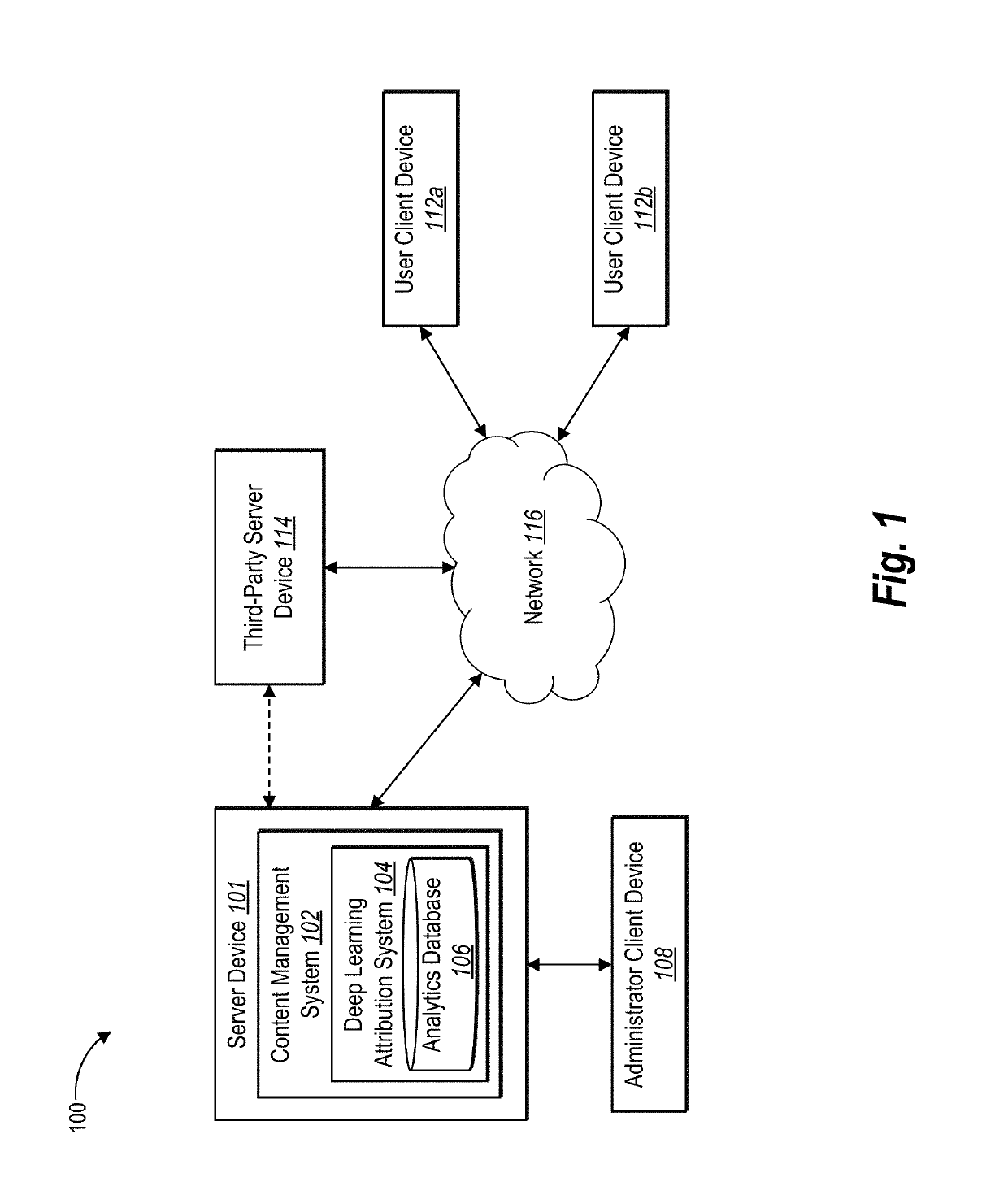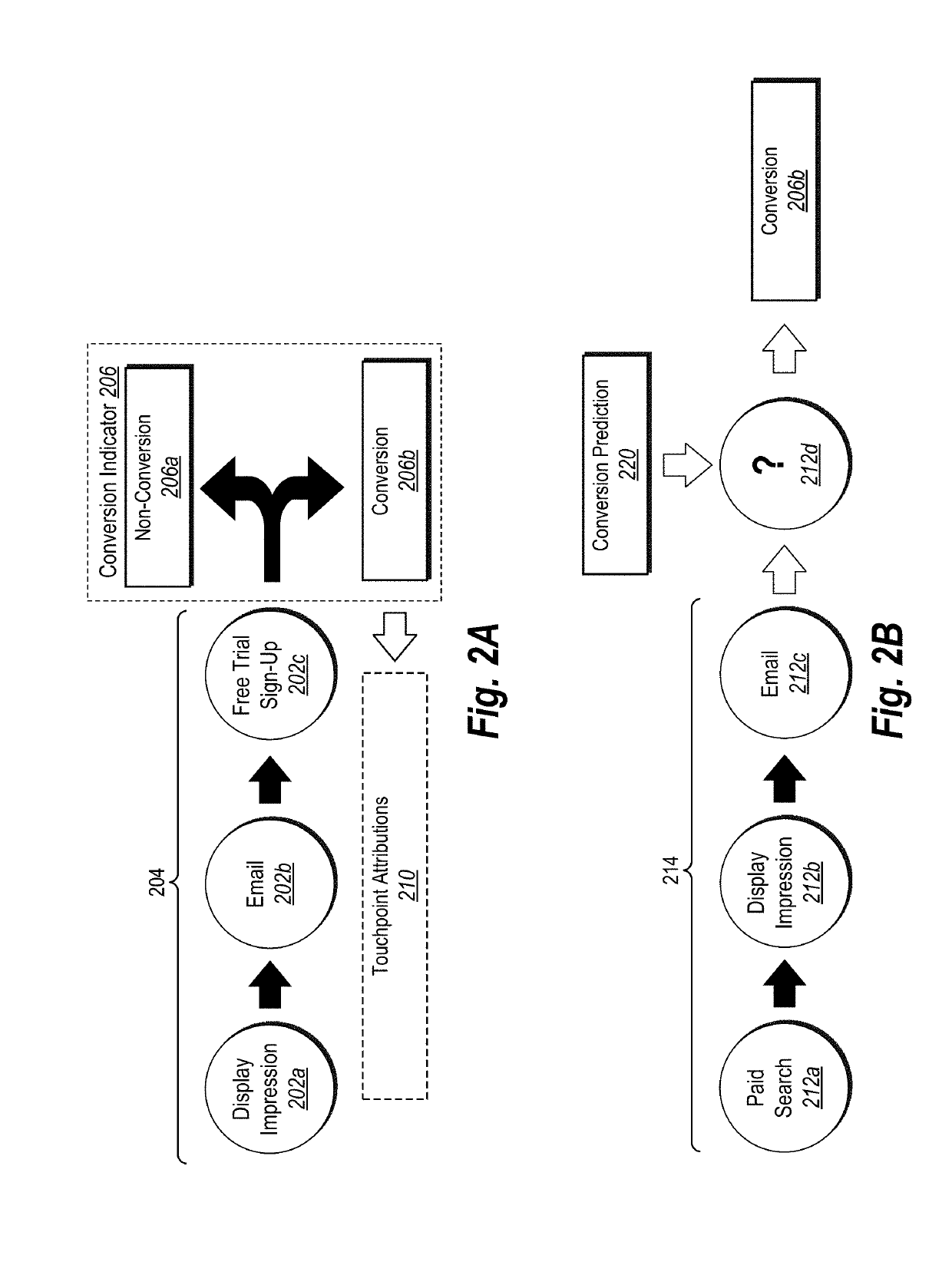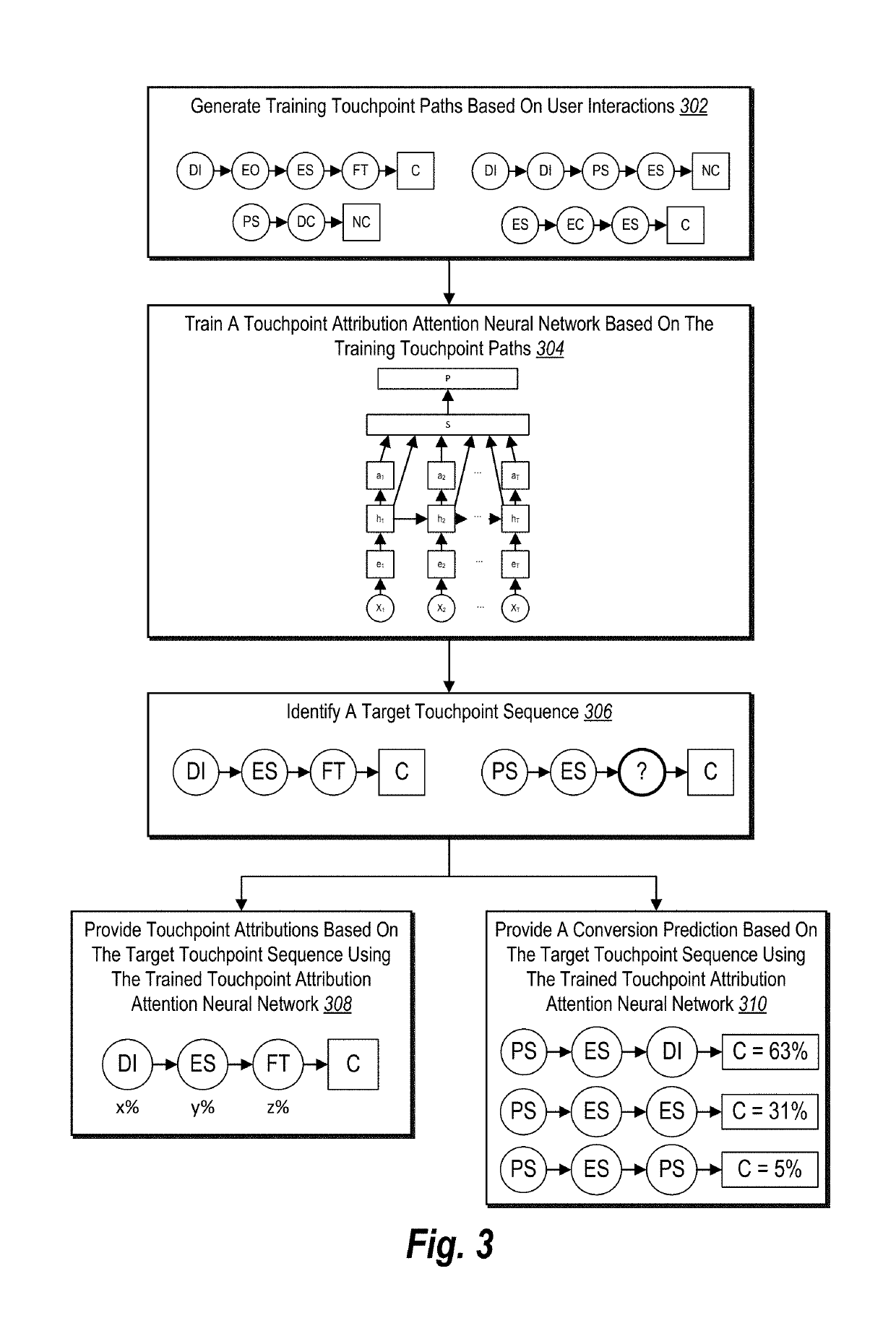Utilizing a touchpoint attribution attention neural network to identify significant touchpoints and measure touchpoint contribution in multichannel, multi-touch digital content campaigns
a touchpoint attribution attention and neural network technology, applied in the field of touchpoint attribution attention neural network to identify significant touchpoints and measure touchpoint contribution in multichannel, multi-touch digital content campaigns, can solve the problems of inaccurate and inaccurate selection of digital media channels by and the inability of conventional digital content dissemination systems to accurately so as to reduce the influence over time, accurately, efficiently, and flexibly measure the influence of particular media channels
- Summary
- Abstract
- Description
- Claims
- Application Information
AI Technical Summary
Benefits of technology
Problems solved by technology
Method used
Image
Examples
Embodiment Construction
[0021]This disclosure describes one or more embodiments of a deep learning attribution system that generates and utilizes a touchpoint attribution attention neural network to identify significant touchpoints and / or measure performance of touchpoints in digital content campaigns that utilize multiple media channels and touchpoints to provide digital content to user client devices. For instance, in one or more embodiments, the deep learning attribution system trains a touchpoint attribution attention neural network (that includes an encoding layer, an LSTM layer, and a touchpoint attention layer) based on training touchpoint paths. Specifically, in one or more embodiments, the deep learning attribution system trains the touchpoint attribution attention neural network utilizing a time-decay parameter and a jointly trained user bias control machine-learning model. In this manner, the deep learning attribution system can generate and utilize a touchpoint attribution attention neural netw...
PUM
 Login to View More
Login to View More Abstract
Description
Claims
Application Information
 Login to View More
Login to View More - R&D
- Intellectual Property
- Life Sciences
- Materials
- Tech Scout
- Unparalleled Data Quality
- Higher Quality Content
- 60% Fewer Hallucinations
Browse by: Latest US Patents, China's latest patents, Technical Efficacy Thesaurus, Application Domain, Technology Topic, Popular Technical Reports.
© 2025 PatSnap. All rights reserved.Legal|Privacy policy|Modern Slavery Act Transparency Statement|Sitemap|About US| Contact US: help@patsnap.com



